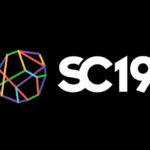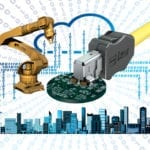Cooling Strategies for Data Centers
Increased data volumes and high-speed switching requirements are pushing manufacturers to get creative when it comes to thermal cooling strategies.
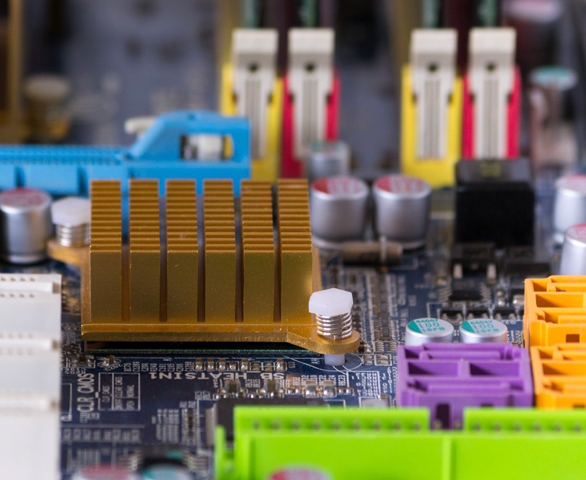
Increased data volumes and higher switching speeds require innovative cooling strategies that extend beyond traditional heat sinks and fans.
The proliferation of streaming services, social media, digital automation, and the Internet of Things (IoT) has led to a rapid increase in data volumes. Large amounts of data are being generated as sensors feed intelligent networks for machine learning, autonomous driving, remote healthcare, and lighting and energy use in smart factories, smart homes, and smart cities.
The data center market is transitioning from 100G interfaces to 400G and ultimately 800G interfaces as 5G services and high-performance computing demands are realized. To help data centers handle these volumes efficiently and protect sensitive equipment from excess heat build-up, operators must manage higher switching rates while maintaining both high signal integrity and effective thermal management. Despite increased bandwidths and more data traffic, most data centers have not yet changed the connector form factors used in their systems. But connector suppliers are rapidly developing innovative product solutions designed to meet these demanding new data center demands.
Zach Galbraith, product manager at TE Connectivity, believes that the company’s Thermal Bridge solution — an innovative mechanical version of a thermal gap pad or thermal interface material (TIM) released at DesignCon 2019 — will help data centers keep their systems cool while handling higher data volumes. Thermal Bridge solutions have an interleaved plate design with a large number of parallel plates that transfer heat from I/O modules to a cooling area and are available in TE’s single, stacked, and ganged QSFP, QSFP-DD, SFP, and SFP-DD connectors.
“The market as a whole is starting to move more bandwidth and more data through a similar sized connector form factor. The heat profiles associated with these [connectors] continue to rise,” said Galbraith. Getting heat away from optical modules in particular — and moving it somewhere else, not just around the modules — means that the interface is becoming “more and more critical.”
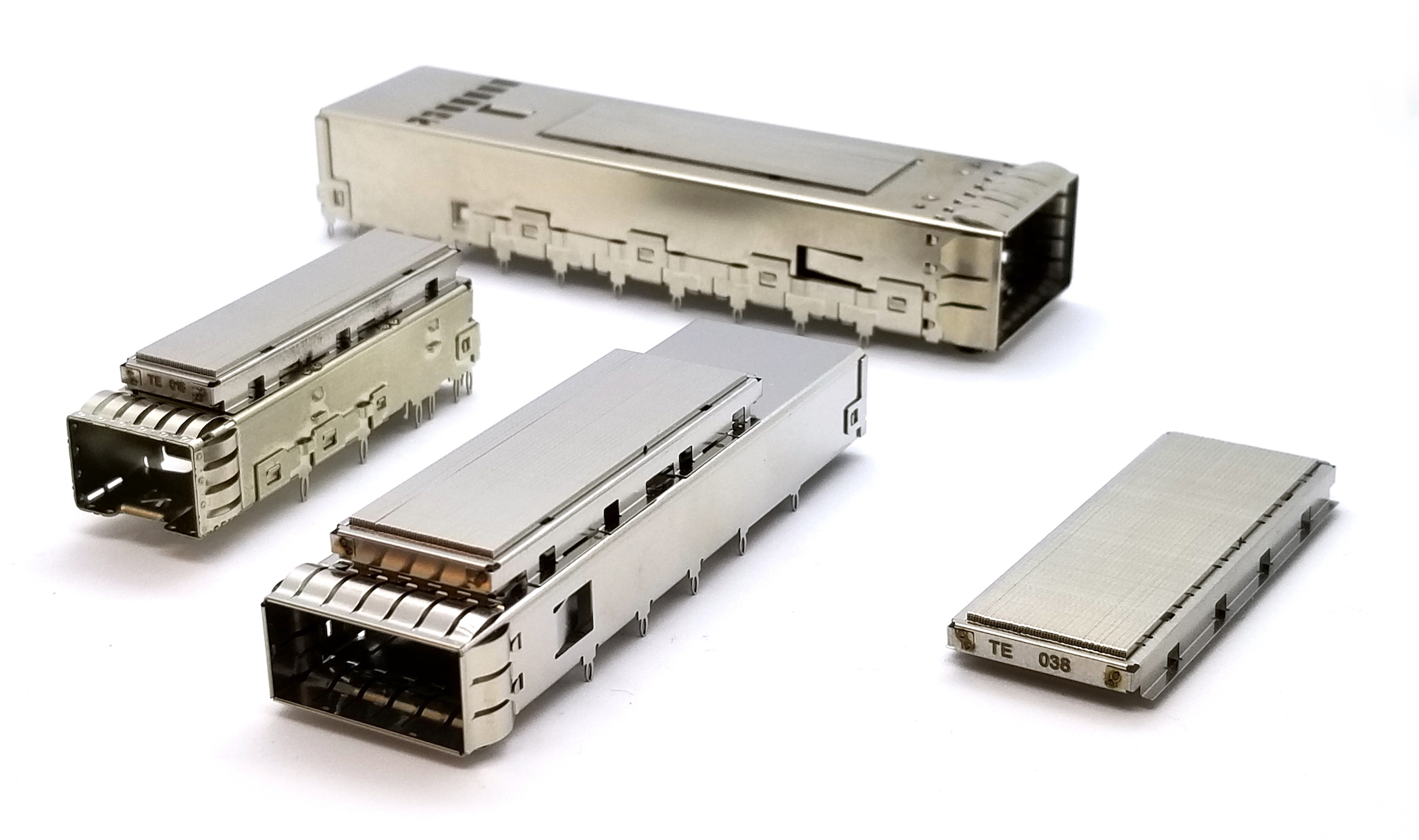
TE Connectivity offers single and stacked Thermal Bridges in QSFP, QSFP-DD, SFP, and SFP-DD form factors with single, stacked, and ganged configurations.
TE’s Thermal Bridge solution acts “as a bridge between an I/O module or a cable assembly plug and a cold plate or a ganged heat sink application,” he continued, and is more efficient than conventional materials, as it does not have to rely on high levels of compression to achieve performance levels. “For gap pads and TIMs, customers have to have some spring mechanism or an extreme amount of force to press down and compress rubber materials to make sure the heat is transferring effectively. The Thermal Bridge doesn’t need that. All it has to do is make contact with an I/O module and some type of cold plate or ganged heat sink to transfer the heat.”
In addition, gap pads and TIMs degrade in performance over time, which means that more pressure has to be exerted as time passes in order to maintain initial performance. Alternately, TE’s Thermal Bridge does not have to be replaced if a line card or application needs to be serviced, as it is qualified with all the other heat sinks and thermal solutions provided by TE.
“Feedback from customers tells us that when they start to take the box apart to service a line card they have to replace the gap pads and TIM and rely on an installer or OEM to do that. Our Thermal Bridge solutions gives control back to OEMs and design companies since they don’t need to be replaced for the end application to work as well,” said Galbraith. The Thermal Bridge’s temperature and humidity remain consistent over time, which means that replacements or increased compression are not required, and the spring mechanisms are internal to the design, which simplifies mating architectures.
Thermal Routing Options
Matt Burns, technical marketing manager at Samtec, said that the company has seen its data center business grow by more than 40% in the last five years. “Data demand knows no boundaries,” he said.
Today’s silicon transceivers are running at 56 to 112Gb/s PAM4 data rates, from the edge to the cloud. “At those speeds, standard PCB materials and design techniques constrain performance,” Burns said. Samtec developed its Flyover® technology to overcome those challenges. The Flyover design extends signal reach and density by routing signals from the front panel to the mid-board via a proprietary Eye Speed®, low-skew, twinaxial cable, which is designed to eliminate the inconsistencies of individually extruded, dielectric twinaxial cabling to extend signal integrity, bandwidth, and reach.
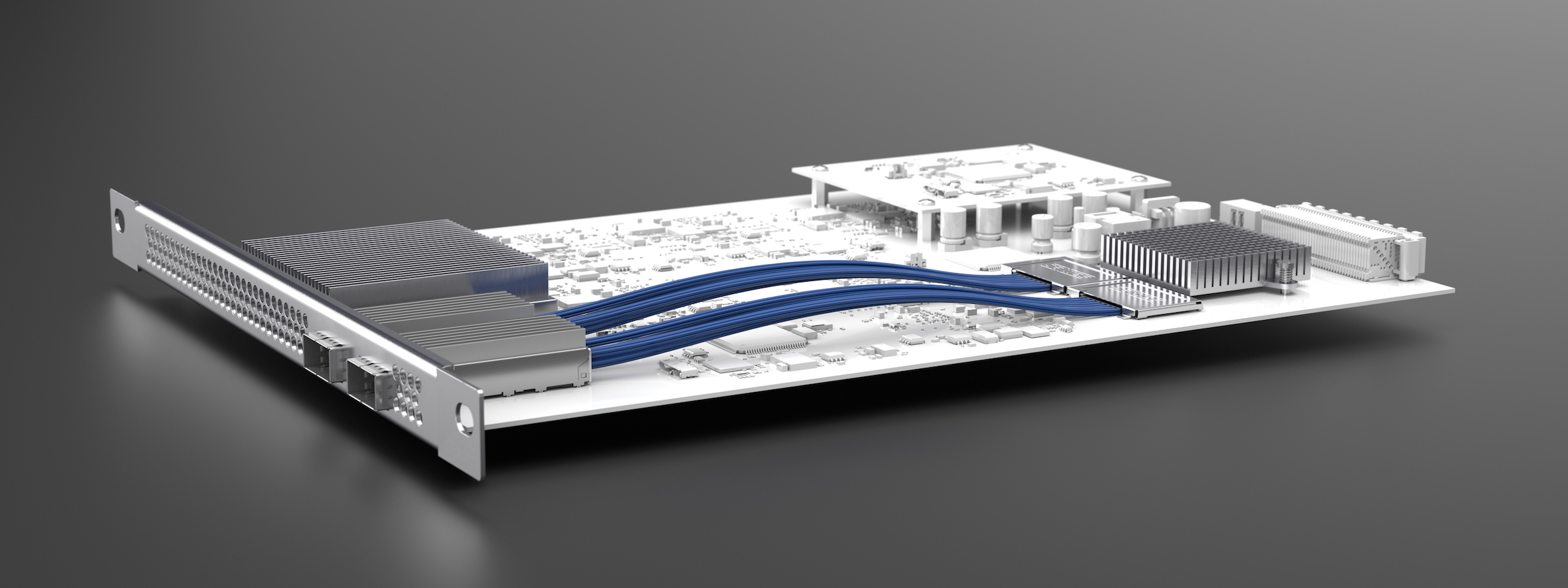
Samtec’s Flyover QSFP-DD
At DesignCon 2019, the company demonstrated the FQSFP-DD, the first product to apply the Flyover architecture to the QSFP-DD form factor. “The FQSFP-DD series leverages the cage and thermal options of the QSFP-DD MSA [Multiple Source Agreement], but offers improved performance and architectural flexibility,” said Burns. He also noted that the density of pluggable cages in a 1U server box requires thermal mitigation. Samtec offers HS-QSDP-DD series heat sinks for this purpose.
Thermal Material Choices
In addition to employing new hardware technologies to improve the thermal performance of a system, package- and device-level thermal management solutions including heat sinks, conductive greases or films, and custom heat spreaders can help dissipate excess heat. At the system level, Burns says that solutions may include sizing baffles or plenums, fans and/or strategic fan placement, optimizing component placement, and the use of heat pipes or vapor chambers.
Materials should also be given careful consideration in order to maximize thermal management and cooling strategies, as size, weight, and cost are always amongst design considerations. “Aluminum is our first choice, as it facilitates the manufacturing process, needs no secondary finishes, and is lightweight and fairly cost-effective,” which is beneficial since “reliability can be tied to weight concerns in high shock and vibration environments,” said Burns. “Samtec offers cable management support that helps minimize cable size, density, weight, and skew inside the box.”
Clearly, the demands placed on data centers are not going to diminish. So, it’s reassuring that trusted connector suppliers well versed in the rapidly changing data demands affecting nearly all markets are actively developing innovative new products that will help mitigate the thermal cost of our increasingly connected lifestyles.
(Samtec Flyover and Eye Speed are registered marks of Samtec, Inc.)
Like this article? Check out our other Connector and Cable Basics and high-speed articles, our Datacom/Telecom Market Page, and our 2019 Article Archive.
- Matter: A Show of Unity for Connectivity - September 5, 2023
- Brexit Update: UK Connector Industry - March 28, 2023
- Sensors Make it Plain Sailing for a Smart Ferry - February 21, 2023


